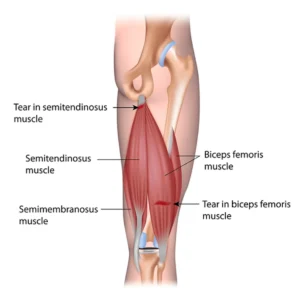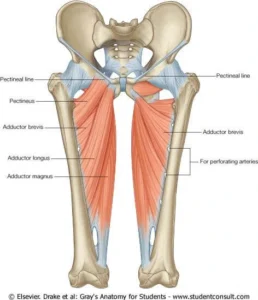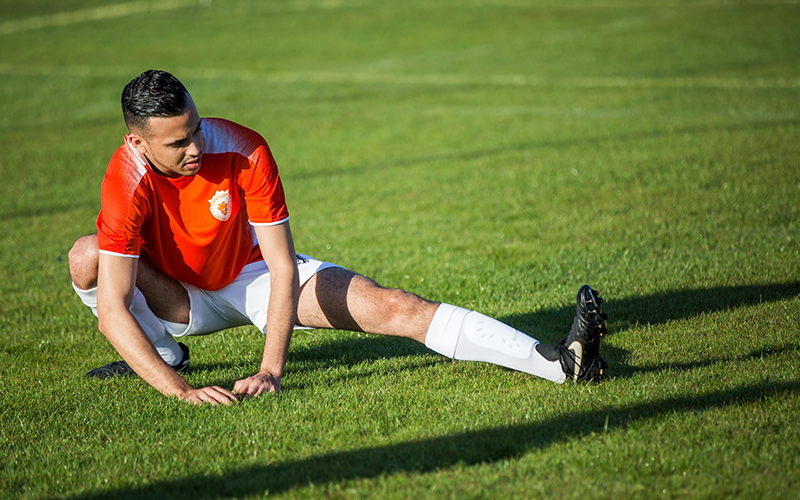
What is the difference between static and dynamic stretching?

Static Stretching

Dynamic Stretching
For more information on dynamic stretching and sport-specific warm ups, check out the ACL Prevention Program created by Seattle Pediatric Sports Medicine for youth athletes.
What is the most beneficial type of stretching for athletes?
Static stretching immediately following a match did not show any benefit when compared to passive recovery (rest) during the next 48 hours after the match with regard to all variables measured.
Over 48 hours, the body goes through a period of recovery improving all variables mentioned above. No significant differences in measurements were found between the static stretching and rest groups suggesting static stretching provides no additional benefit to a faster recovery.
However, static stretching can be beneficial for adolescents currently going through a growth spurt. Youth athletes will commonly complain of heel pain, hamstring tightness and knee pain, all of which can be a result of growing. Puberty brings about quick changes in body shape, height and composition. These changes often lead to a decrease in relative flexibility as bone grows at a faster rate than muscle. This can largely affect the young athlete’s ability to process its position in space and coordinate movements, thus producing the coined term “adolescent awkwardness” and temporarily hinder overall sport performance. Static stretching may be able to reduce some of these effects by improving muscle length to better match the growing bones it surrounds.
Alternatively, utilizing full depth loaded movements can also provide a stretch to specific tissues while also enhancing muscular control into an end-range position. Both tasks play an important role with regard to athletic performance and injury prevention.
Common muscle strains in youth soccer players

The hamstrings are located on the back of the thigh and include the biceps femoris (short head and long head), semimembranosus, and semitendinosus. These muscles bend the knee and extend the hip.

The adductors are located on the inside of the thigh. Their main role is to move the legs in towards the midline of the body, with some of them serving additional functions. The adductors include the adductor longus, adductor brevis, adductor magnus, gracilis, and pectineus. A strain in this region may also be referred to as a groin strain.

The calf muscle group is located on the back of the lower leg and is composed of the gastrocnemius and soleus. These muscles share a common attachment on the heel via the Achilles tendon. They both work to point the foot down, also known as ankle plantarflexion. The gastrocnemius also plays a role in bending the knee.
Stretches to reduce soccer injuries
Cossack Squats
- Start with legs wide and shift your weight into one leg by bending through your knee and hip
- Try to keep your knee stacked over your ankle, minimizing any side to side movement of your knee
- Your back should stay in a neutral position throughout the movement
- Your other leg should remain as straight as possible, allowing you to feel a stretch through the inner part of your thigh and groin
- Alternate between sides and perform 2 sets of 10 per side
Romanian Deadlift (RDL)
- Start standing with a soft bend in your knees (not bent, but not locked out)
- Shift your weight towards the back part of your feet by hinging your hips backwards
- As your hips shift back, your torso will remain neutral and begin angling down towards the ground
- You should feel your glutes, hamstrings and core working to control the movement
- Reach as far down as you can to feel a moderate stretch through the hamstrings while still being able to maintain a neutral spine
- Perform 2 sets of 10 at a slow controlled pace
Nordic Hamstring Curl
- Start in a tall kneeling position with a partner holding your ankles behind you
- Maintain a straight line from your knees to your shoulders as you try to slowly lower your body down to the floor, controlling primarily with your hamstrings
- Use your arms to help slow your body down as it nears the ground and push back up into kneeling
- Perform 2 sets of 8
Eccentric Calf Raise 2 up/1 down
- Start by leaning into a wall and keep your heels on the ground. You should feel a stretch in your calves
- Lift both heels at the same time and pause at the top for 2 seconds
- Pick up one foot and slowly return your other heel to the ground. This should take about 5 seconds
- Return your other foot to the ground and repeat for 2 sets of 12 per side
Eccentric Single Leg Calf Raise
- Start by leaning into a wall and keep your heel on the ground. You should feel a stretch in your calf
- Lift your heel and pause at the top for 2 seconds
- Slowly return your heel to the ground. This should take about 5 seconds
- Repeat for 2 sets of 12 per side
Standing Gastrocnemius Stretch
- Put a rolled up towel on the ground and place the ball of your foot on the towel
- Straighten you knee and lean forward into the wall until you feel a moderate stretch in your calf
- Hold for 30-45 seconds, repeat for a total of 3 sets
Standing Soleus Stretch
- Put a rolled up towel on the ground and place the ball of your foot on the towel
- Bend your knee 20-30 degrees and lean forward into the wall until you feel a moderate stretch in your calf
- Hold for 30-45 seconds, repeat for a total of 3 sets
Butterfly Stretch
- Sit on the ground and bring the soles of your feet together by allowing your knees to fall out to the side
- Use your elbows to help push your knees down toward the ground
- At the same time, lean forward through your hips until a moderate stretch is felt around your groin and inside of your thighs
- Hold for 30-45 seconds, repeat for 3 sets
Static Stretching Protocol
5 sessions/week for 12 weeks – ex: performed 1x/day Monday-Friday
Weeks 0-3: 2x6x45s (2 sets of 6 reps each held for 45s)
Weeks 4-6: 2x6x60s (2 sets of 6 reps each held for 60s)
Weeks 7-9: 2x6x75s (2 sets of 6 reps each held for 75s)
Weeks 10-12: 2x6x90s (2 sets of 6 reps each held for 90s)
* Reps are performed in succession of each other with a 1 minute break in between sets at a 7-8/10 intensity level.
BOTTOM LINE
Static stretching has been shown to reduce the rate of force a muscle can produce, which can be hindering activities requiring a large amount of power such as sprinting. Most studies support dynamic stretching over static stretching, though the most optimal warm up is sport-specific incorporating frequently used movement patterns the athlete will encounter during a game.
Schedule an Appointment
Found this article helpful? Schedule an appointment today and get 1on1 guidance on how to reduce your risk for injury and improve your performance.
Jessica Hiestand DPT, CSCS

This post was written by Dr. Jessica Hiestand in December of 2022.
Learn more about Jessica on our about page: https://gopt.co/people/jessica-heistand/
References
2. Hill, M., Scott, S., McGee, D. et al. Coaches’ Evaluations of Match Performance in Academy Soccer Players in Relation to the Adolescent Growth Spurt. J. of SCI. IN SPORT AND EXERCISE 2, 359–366 (2020). https://doi.org/10.1007/s42978-020-00072-3
3. Panidi I, Bogdanis GC, Terzis G, Donti A, Konrad A, Gaspari V, Donti O. Muscle Architectural and Functional Adaptations Following 12-Weeks of Stretching in Adolescent Female Athletes. Front Physiol. 2021 Jul 16;12:701338. doi: 10.3389/fphys.2021.701338. PMID: 34335307; PMCID: PMC8322691.
4. Pooley S, Spendiff O, Allen M, et alStatic stretching does not enhance recovery in elite youth soccer playersBMJ Open Sport & Exercise Medicine 2017;3:e000202. doi: 10.1136/bmjsem-2016-000202
5. Robles-Palazón, F. J., Ayala, F., Cejudo, A., De Ste Croix, M., Sainz de Baranda, P., & Santonja, F. (2020). Effects of age and maturation on lower extremity range of motion in male youth soccer players. Journal of Strength and Conditioning Research, 36(5), 1417–1425. https://doi.org/10.1519/jsc.0000000000003642
